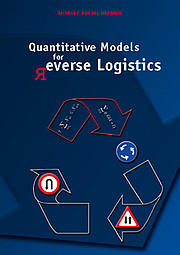Quantitative Models for Reverse Logistics Defended on Thursday, 5 October 2000
Economic, marketing, and legislative considerations are increasingly leading companies to take back and recover their products after use. From a logistics perspective, these initiatives give rise to new goods flows from the user back to the producer. The management of these goods flows opposite to the traditional supply chain flows is addressed in the recently emerged field of Reverse Logistics. This monograph considers quantitative models that support decision making in Reverse Logistics. To this end, several recent case studies are reviewed. Moreover, first hand insight from a study on used electronic equipment is reported on. On this basis, logistics issues arising in the management of "reverse" goods flows are identified. Moreover, differences between Reverse Logistics and more traditional logistics contexts are highlighted. Finally, attention is paid to capturing the characteristics of Reverse Logistics in appropriate quantitative models.
Keywords
remanufacturing, waste, costs, distribution, environment, equipment, Europe, facility, facility location, forecasting, fraction, Germany, goods, goods ows, inbound, industry, inspection, integration, inventory, inventory models, inventory position, lead times, logistics networks, machines, management, manufacturing, marketing, modelling, network design, networks, optimality, optimising, packaging, paper recycling, planning, product recovery, recovery, recovery network, recycling, repair, resources, responsibility, returning, reuse, reverse, reverse channel, reverse logistics, review, supply chain, supplying, transportation, uncertainty, unit variable cost, van, warehouses












